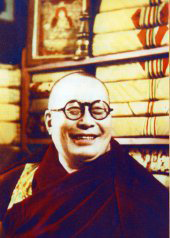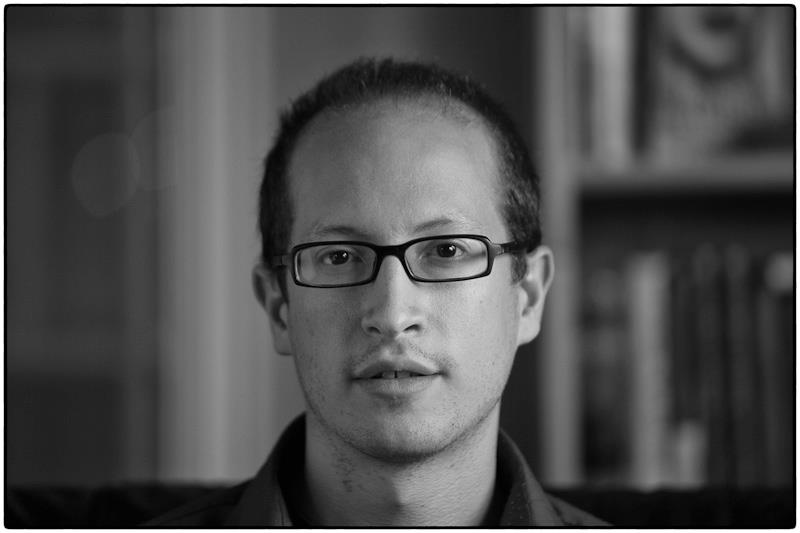Biography and autobiography in Tibet are important sources for both education and inspiration. The authors involved in the Treasury of Lives mine primary sources to provide English-language biographies of every known religious teacher from Tibet and the Himalayas, all of which are organized on their website. The following summarizes the biography of the Jigme Rigpai Lodro (1910–1985) by Nicole Willock.

Many readers of this blog are familiar with the received narrative of Tibet in the 20th century: in 1959, the Red Army invaded, destroying monasteries, torturing and imprisoning monks, and forcing the most educated and accomplished Tibetan teachers to flee. As the story goes, since then, Tibetan Buddhism has been remarkably successful in the occident, while continually suppressed, demeaned, and controlled within the borders of Tibet itself. Fortunately, this is not entirely accurate.
In certain regions and periods there has been resurgence and even flourishing of Buddhist studies, practice, and arts within Tibetan regions. This is largely due to the charismatic and devoted leadership of some teachers who, either by choice or forced by circumstance, remained in Tibet during the Cultural Revolution, survived, and, against tremendous odds, were able to navigate the dramatically altered political landscape of their homeland and re-establish great centers of Buddhist practice and learning. In a series of blog posts, we will be highlighting contemporary masters who have significantly contributed to the preservation of Tibetan Buddhism in its homeland.
Jigme Rigpai Lodro (1910–1985) is one such figure. Born to a Chinese father and Tibetan mother, he was posed to play an important role in the revival of Buddhist culture in Tibet. At the age of 2 he was recognized as the incarnation of the 5th Tseten Zhabdrung, a Geluk incarnation line, despite having been given his name by a Nyingma teacher. He soon took up residence at Garwaka, a group of six monasteries in Amdo, northeastern Tibet, which included a college, printing house, and retreat center. In addition to completing the traditional Geluk curriculum, he was also well versed in both Nyingma and Sakya liturgies, and led prayers at his monastery according to a Nyingma system, as was the tradition. He excelled in upholding his monastic vows, and was an incredibly prolific author—his collected works now span nine volumes. Unlike many of his contemporaries, he was studied in modern science, and was known to teach and write about a round earth, the scientific reasons for eclipses, a more accurate historical dating system, and other topics on which the traditional education system in Tibet had lagged far behind. In this way, he was similar to the iconoclastic scholar Gendun Chophel (1903–1951).
 His learning, reputation, geographical location, and ethnicity were all factors that made him an attractive partner in the newly forming communist government. In 1954, he was summoned to Beijing to participate in the translation of the new constitution into Tibetan. That same year, he met with and received teachings from the 10th Paṇchen Lama, Chokyi Gyeltsen, and the 14th Dalai Lama, Tenzin Gyatso, who were both in Beijing to attend the National People’s Congress.
His learning, reputation, geographical location, and ethnicity were all factors that made him an attractive partner in the newly forming communist government. In 1954, he was summoned to Beijing to participate in the translation of the new constitution into Tibetan. That same year, he met with and received teachings from the 10th Paṇchen Lama, Chokyi Gyeltsen, and the 14th Dalai Lama, Tenzin Gyatso, who were both in Beijing to attend the National People’s Congress.
After a brief period of running his monastery in Tibet, Jigme Rigpai Lodro was forced to again return to Beijing for translation work. He remained there for the course of the Cultural Revolution while many of the monasteries and centers of learning in his homeland were destroyed. He managed to return in 1962, only to be imprisoned two years later at Xining’s Nantan Prison, where he spent the next 12 years.
He was finally released in 1978, and after recuperating in his hometown, was asked to join the Tibetan Studies Department of the Northwest Minorities University in Lanzhou, Gansu Province. While on faculty, he trained some of the most prominent Tibetan scholars today, including Pema Bum, the director of Latse Contemporary Tibetan Cultural Library in New York City.
In addition to his work at the university, he began to travel and give lectures at both secular institutions and monasteries. Many of his works have been recorded and distributed as CDs. Eventually, he was officially pardoned and given compensation money from the Chinese government, which he used to start a scholarship fund for Tibetan Studies students in financial need at the Northwest Nationalities Institute. He was also active in rebuilding many of the monasteries that had been destroyed in his homeland of Amdo.
Jigme Rigpai Lodro passed away of natural causes in 1985. His funeral at Labrang monastery was attended by thousands of devotees. His life is a fine example of how some Tibetans were able to excel and preserve their culture by working within established institutions, especially through academia, despite years of hardship and persecution.
For more information on Jigme Rigpai Lodro’s illustrious teachers, activities, the nature of his education, content of his writings, and influence, make sure to visit Jigme Rigpai Lodro’s extensive biography at the Treasury of Lives, and stay tuned for more features on influential Tibetan teachers’ activities within Tibet in the second half of the 20th century!
 Harry Einhorn is a student of Tibetan language and performance traditions in Dharamsala, India, and an educator at the Rubin Museum of Art. He serves as an editor at the Treasury of Lives and also composes music and theater inspired by Tibetan Buddhist themes.
Harry Einhorn is a student of Tibetan language and performance traditions in Dharamsala, India, and an educator at the Rubin Museum of Art. He serves as an editor at the Treasury of Lives and also composes music and theater inspired by Tibetan Buddhist themes.
Thank you for subscribing to Tricycle! As a nonprofit, we depend on readers like you to keep Buddhist teachings and practices widely available.